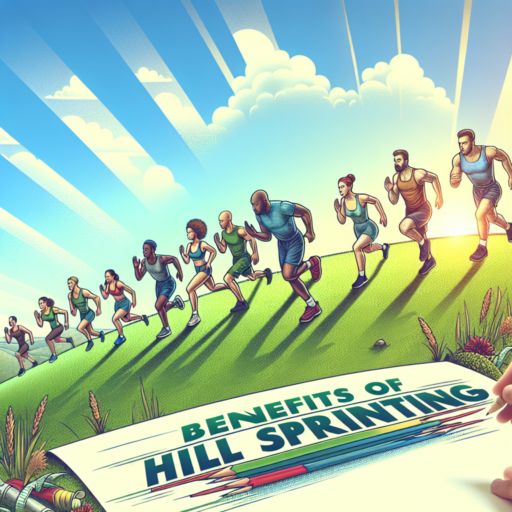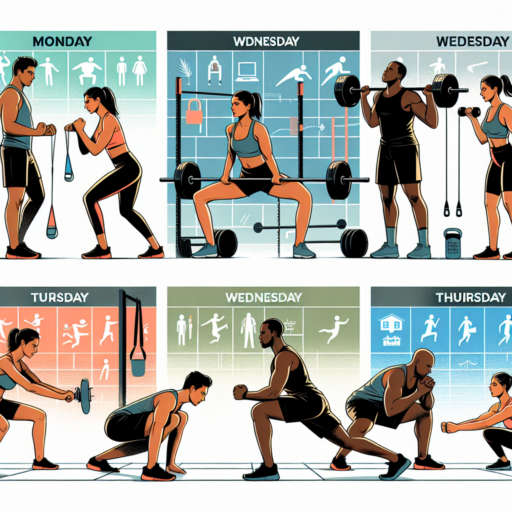No se han encontrado productos.
Do hill sprints build muscle?
Hill sprints are an exceptional type of high-intensity workout that not only test the limits of your stamina but also have a profound impact on your muscle-building endeavors. This demanding physical activity targets numerous muscle groups simultaneously, making it a potent exercise for those seeking to enhance their muscular structure.
When performing hill sprints, the body’s lower half works tirelessly against gravity. This uphill battle requires the engagement of the glutes, hamstrings, quads, and calves, leading to a comprehensive lower-body workout. Moreover, the intensity of the uphill sprint necessitates a rapid arm movement, which, in turn, engages the upper body albeit to a lesser extent, including the abs, shoulders, and arms. The integrated nature of this action means that hill sprints can indeed contribute significantly to muscle development and strength.
Furthermore, hill sprints stimulate the fast-twitch muscle fibers – fibers known for their role in quick, explosive movements and their higher potential for growth compared to slow-twitch fibers. This engagement is essential for promoting muscle hypertrophy, thereby facilitating the growth of lean muscle mass.
How many days should I do hill sprints?
The number of days you should dedicate to hill sprints largely depends on your current fitness level, training goals, and overall workout regimen. Typically, incorporating hill sprints into your workout routine 1 to 2 days a week is recommended for beginners, with the possibility of increasing frequency as you become more conditioned. It’s important to allow your body to rest and recover between sessions to prevent overuse injuries.
Hill sprints are an intense form of exercise that can significantly enhance your power, speed, and endurance. To optimize the benefits while minimizing the risks, focus on quality rather than quantity. Each session should include a proper warm-up, a series of short sprints (ranging from 10 to 30 seconds each), and a cool-down period. Keeping each sprint session between 20 to 30 minutes, including warm-up and cool-down, is generally sufficient.
Listen to your body and factor in any other physical activities you are engaged in. If you are also partaking in weight training, long-distance running, or any other form of strenuous activity, ensuring adequate recovery time is crucial. Overtraining can lead to diminished results and heightened risk of injury. Remember, hill sprints are a high-intensity workout, and their impact is profound, meaning more is not always better.
Do hill sprints increase testosterone?
Exploring the impact of hill sprints on testosterone levels reveals a fascinating intersection between intense physical activity and hormonal responses. Testosterone, a vital hormone responsible for various bodily functions including muscle growth, fat loss, and overall energy levels, reacts uniquely to different forms of exercise. Hill sprints, by virtue of their high intensity and explosive nature, stand out as a particularly interesting case study in this context.
Understanding the Mechanism
The body’s hormonal response to hill sprints can be attributed to the rigorous demand they place on the muscular and cardiovascular systems. These short, yet extremely powerful bursts of activity are known to significantly stress the body, a condition which is often followed by an increase in certain hormones, including testosterone. The sheer intensity and the anaerobic nature of hill sprinting effectively stimulate the production of this crucial hormone, thereby potentially enhancing its levels in the bloodstream post-exercise.
The Role of Intensity
Intensity plays a pivotal role in the testosterone-boosting benefits of hill sprints. Unlike moderate exercises, the explosive and high-intensity nature of these sprints triggers a more pronounced hormonal response, including the release of testosterone. This is largely because engaging in higher intensity activities necessitates greater muscle recruitment, which in turn, signals the body to release more testosterone to aid in muscle recovery and growth. Furthermore, the uphill challenge adds an additional layer of resistance, amplifying the exercise’s overall intensity and hence, its impact on testosterone levels.
Are hill sprints better than jogging?
Debating whether hill sprints are better than jogging involves considering various fitness goals and individual preferences. Hill sprints, characterized by short, intense bursts of uphill running, provide a challenging cardiovascular workout. In contrast, jogging, a form of slow to moderate-paced running, is known for its ability to improve endurance and cardiovascular health over longer periods. Both exercises offer unique benefits, but the choice between them often relies on what you aim to accomplish with your fitness routine.
Hill sprints, due to their high intensity, engage more muscle groups than jogging, particularly the glutes, hamstrings, quads, and calves. This intense activity not only boosts muscle strength but also enhances explosive power and speed, making it an excellent choice for athletes looking to improve their performance in sports that require short bursts of energy. Moreover, the nature of hill sprints promotes fat burning, as the body continues to burn calories long after the workout is over, thanks to the afterburn effect.
On the other hand, jogging stands out for its accessibility and its impact on long-term health benefits. As a steady-state cardio exercise, it is less intimidating for beginners and can be maintained for longer durations, aiding in the development of cardiovascular endurance. Additionally, jogging is effective in burning calories, particularly when practiced regularly, and it can be an essential component of a weight management or fitness routine. The lower impact nature of jogging also means it might be more suitable for individuals with concerns about joint health or those recovering from injuries.




